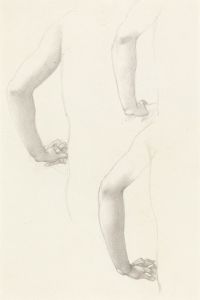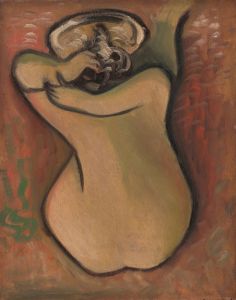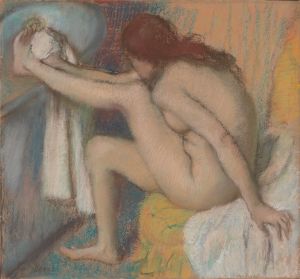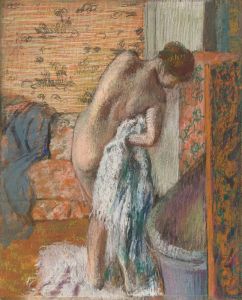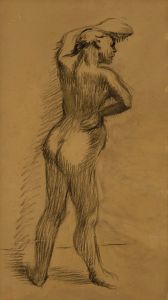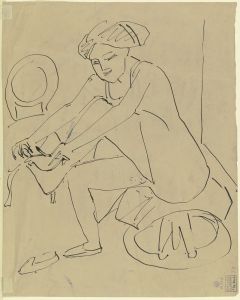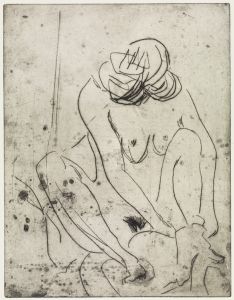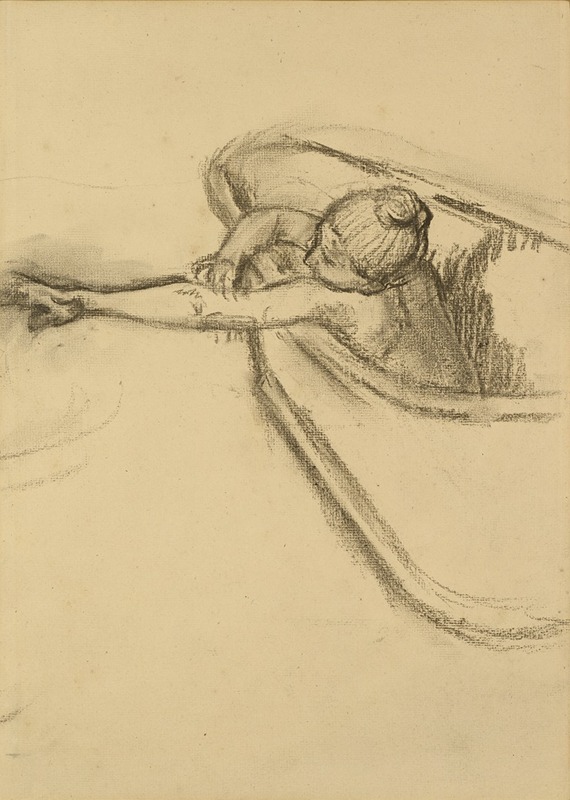
Woman in the Bath Drying her Arm
A hand-painted replica of Edgar Degas’s masterpiece Woman in the Bath Drying her Arm, meticulously crafted by professional artists to capture the true essence of the original. Each piece is created with museum-quality canvas and rare mineral pigments, carefully painted by experienced artists with delicate brushstrokes and rich, layered colors to perfectly recreate the texture of the original artwork. Unlike machine-printed reproductions, this hand-painted version brings the painting to life, infused with the artist’s emotions and skill in every stroke. Whether for personal collection or home decoration, it instantly elevates the artistic atmosphere of any space.
"Woman in the Bath Drying her Arm" is a pastel drawing created by the renowned French artist Edgar Degas, who is celebrated for his innovative contributions to the Impressionist movement. Degas, known for his mastery in depicting the human form and capturing intimate, candid moments, created this artwork as part of his extensive exploration of the female nude and domestic scenes.
The drawing is believed to have been completed in the late 19th century, a period during which Degas was particularly focused on the theme of women engaged in everyday activities, often in private settings. This work is part of a series of bathers that Degas produced, showcasing his fascination with the natural, unguarded moments of women at their toilette. The subject of the drawing is a woman in the midst of drying her arm after a bath, a scene that reflects Degas's interest in the nuances of human posture and movement.
Degas's technique in this pastel drawing is notable for its use of vivid colors and dynamic lines, which convey both the texture of the skin and the play of light on the body. The composition is intimate, drawing the viewer's attention to the subtle gestures and the serene atmosphere of the scene. The use of pastels allowed Degas to achieve a softness and immediacy in his depiction, capturing the fleeting moment with a sense of spontaneity and realism.
The artwork exemplifies Degas's departure from traditional representations of the nude, which often idealized the female form. Instead, Degas presents a more realistic and unembellished view, focusing on the authenticity of the moment. This approach was part of a broader trend among Impressionist artists to depict modern life in all its forms, challenging conventional artistic norms and exploring new perspectives.
"Woman in the Bath Drying her Arm" is housed in the Hill-Stead Museum in Farmington, Connecticut, which holds a significant collection of Impressionist works. The museum's collection was largely assembled by Alfred Atmore Pope, an industrialist and art collector, and his daughter, Theodate Pope Riddle, who was instrumental in establishing the museum.
Degas's work continues to be celebrated for its innovative approach to composition and its insightful portrayal of human subjects. His bathers series, including "Woman in the Bath Drying her Arm," remains a testament to his skill in capturing the essence of everyday life and the beauty of the human form in its most natural state. The drawing is a fine example of Degas's ability to blend technical precision with a deep sensitivity to the subtleties of human experience, making it a cherished piece within the canon of Impressionist art.





